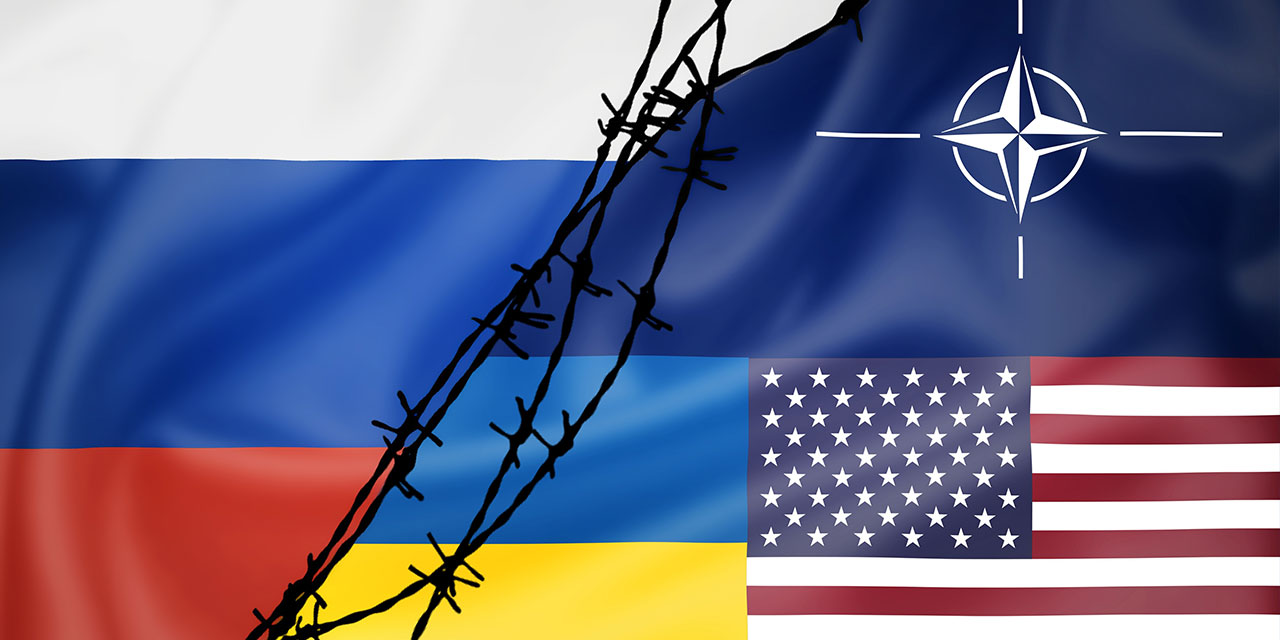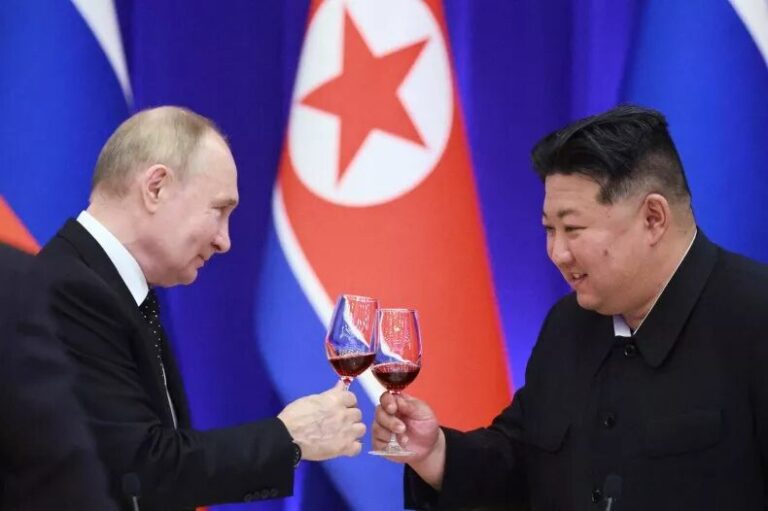In sharp contrast to the original Cold War of 1946-1989 which generally differentiated between Russia as a nation and its then-Communist government, the renewed hostilities between Russia and the West over the Ukraine conflict have seen an ominous wave of Russophobic propaganda targeting the history and culture of Russia. The West’s ideological crusade has repeatedly shown a total disregard for the basic facts of history in its attempt to brand Russia as an evil, aggressive force led by a madman menacing democracy.
A glaring example of this brand of polemics is a recent two-minute video called “Why Russia Fights” produced for the Hoover Institution in an obvious attempt to drum up support for the US proxy war in Ukraine (The video can be accessed here.
Far from limiting its criticism to the policies of Vladimir Putin’s administration, the video from the Hoover Institution paints Russia throughout six centuries of its history as a unified state as a sinister force intent on dominating the world due to an ideology based on moral superiority. Accepting this premise rules out any hope of the West ever peacefully coexisting with Russia unless it is weakened and its vast territory broken up into various small vassal states—as some in the West have argued.
This is a far more extreme position than was ever advanced by influential people and institutions in the earlier Cold War when the principal objection in the West to the Soviet Union was centered on its Communist system rather than its overall history and culture.
By painting Russia as the aggressor and never once mentioning the devastating invasions from the West that Russia suffered over centuries, the Hoover video stands history on its head. Western aggression against Russia was the salient theme in The Battle of Russia, the celebrated wartime documentary produced by Frank Capra for his Why We Fight series. This series was so well known for so long that it seems almost impossible that today’s Western propagandists could ignore it. Indeed, it is likely that those at the Hoover Institution chose the title “Why Russia Fights” as a deliberate attempt to counter Capra’s Why We Fight series. I’m certain the neoconservatives who made the Russophobic video are far from stupid or as ignorant of the basic facts of Russian history as they assume the American public to be. But they clearly believe that the end justifies the means and hence are willing to lie about the past in order to further their cause in the present.
The Hoover Institution apparently calculated that their propaganda will succeed in the present age of disinformation and widespread historical and cultural illiteracy. Unfortunately, they may be right. Surveys have revealed that many Americans do not even know in what century their own Civil War took place or which side Russia was on in World War II. Only a relatively select number of Americans today have seen Eisenstein’s Alexander Nevsky or Mikhail Kalatazov’s The Cranes Are Flying. I doubt if many among the current generation in the US have ever read Tolstoy’s War and Peace or seen the memorable film adaptations by King Vidor and Sergei Bondarchuk.
The new Russophobia that came to the fore in the West during the Maidan coup of 2014—and became especially virulent in the wake of Russia’s Special Military Operation in Ukraine in 2022— has been far more sweeping than during the first Cold War or the earlier period of tsarist rule. The attempt in the West to “cancel” Russian culture in the last few years, eerily reminiscent of the campaign against German culture in the US in 1917-18 during World War I, has no parallel in previous periods of tension between Russia and the West, whether in tsarist or Soviet times. Distinctions were once made in the West between Russian artists and their government, with the artist viewed as expressing a spirit of freedom whatever the constraints imposed on him by the particular regime in power.
Now, however, in the wake of the Ukraine crisis, in a manner all too typical of decades of Western political correctness, there have sprung up various analysts who claim to see the hand of Russian autocracy and ethnocentrism in the country’s great writers, a critique in synch with the deplorable efforts of Ukrainian nationalists to suppress Russia’s classic artists as vestiges of imperial oppression.
Western leaders’ present attitude toward the Russian Federation is clearly guided by old stereotypes of “darkest Russia”–consider the statement made by then-Vice President Joe Biden at the Munich Security Conference in February 2018, that “the time will come—it may not come in the near future—but eventually the people of Russia will look West and out of that deep black hole they have been staring into for the last 150 years or longer.” If he was referring to the decade of the 1860s, then he is clearly unfamiliar with the great reforms of Alexander II including the introduction of trial by jury and the emancipation of the serfs which inspired American abolitionists in their own efforts to get rid of slavery. Culturally, what Biden dismissed as a “deep black hole” was an age of incredible artistic achievements—the great novels of Tolstoy, Dostoyevsky and Turgenev and the great music of Tchaikovsky, Rimsky-Korsakov, Borodin, and Mussorgsky.
But the wave of Russophobia has not only sought to erase the achievements of Russia’s distant past—they seek to distort more recent history as well. In his book, The Road to Unfreedom: Russia, Europe, America, Timothy Snyder, an Establishment historian committed to the new Cold War, consistent with his view that Russia has always been a land of tyrannical darkness, wrote of the “faked 1996 election” in which Boris Yeltsin retained his presidential office but conveniently omitted the major role President Clinton’s advisers played in ensuring that victory. The Hoover Institution once made Alexander Solzhenitsyn an honorary fellow but now condemns as a mortal enemy to Western values the Russian traditions that the writer so powerfully expressed in his works. The West’s chronicle of the new Cold War ignores all of its actions that made February 24, 2022 all but inevitable: the violation of the promise never to expand NATO eastward; the Clinton administration’s strong support of Yeltsin’s autocratic regime in the 1990s and the economic disaster that followed from its policies; the US withdrawal from its arms control treaties with Russia; the US instigation of so-called “color revolutions” hostile to Russia in former Soviet republics, of which the 2014 Maidan coup— which installed a violently Russophobic regime in Ukraine—has been the most disastrous; and the West’s refusal to implement the Minsk accords intended to resolve this crisis.
With the US complicity in Israel’s monstrous Gaza genocide now plainly in evidence, all the West’s high-flown rhetoric about its response to the Ukraine crisis being part of some cosmic struggle between Western democracy and Eastern authoritarianism has been unmasked as nothing more than a hypocritical cover for continued world domination by American military and corporate elites.
The attempt by the Western political and media establishment to whip up fears of the East by simultaneously appealing to Russophobia, Islamophobia and Sinophobia is rooted in centuries of anxieties about “the Other” going back to antiquity. When Western countries have looked eastward, they have experienced uneasiness by the sheer size of these lands, the vastness of their populations, the “strange” customs and cultures of these civilizations, their wealth and power seen as a threat to the West’s planetary domination. At a time when cooperation between East and West is absolutely essential to human survival, there must be a concerted effort by all those who care about continued life on this fragile planet to fight the West’s ancient prejudices. Instead of promulgating as inevitable a “clash of civilizations” between East and West, we must strive for a new consciousness of our shared humanity.
William M. Drew is a writer, film historian, researcher, and college lecturer. He is the author of Speaking of Silents: First Ladies of the Screen (1990) and At the Center of the Frame: Leading Ladies of the Twenties and Thirties (1999) and most recently, of The Woman Who Dared: The Life and Times of Pearl White, Queen of the Serials (2023).





